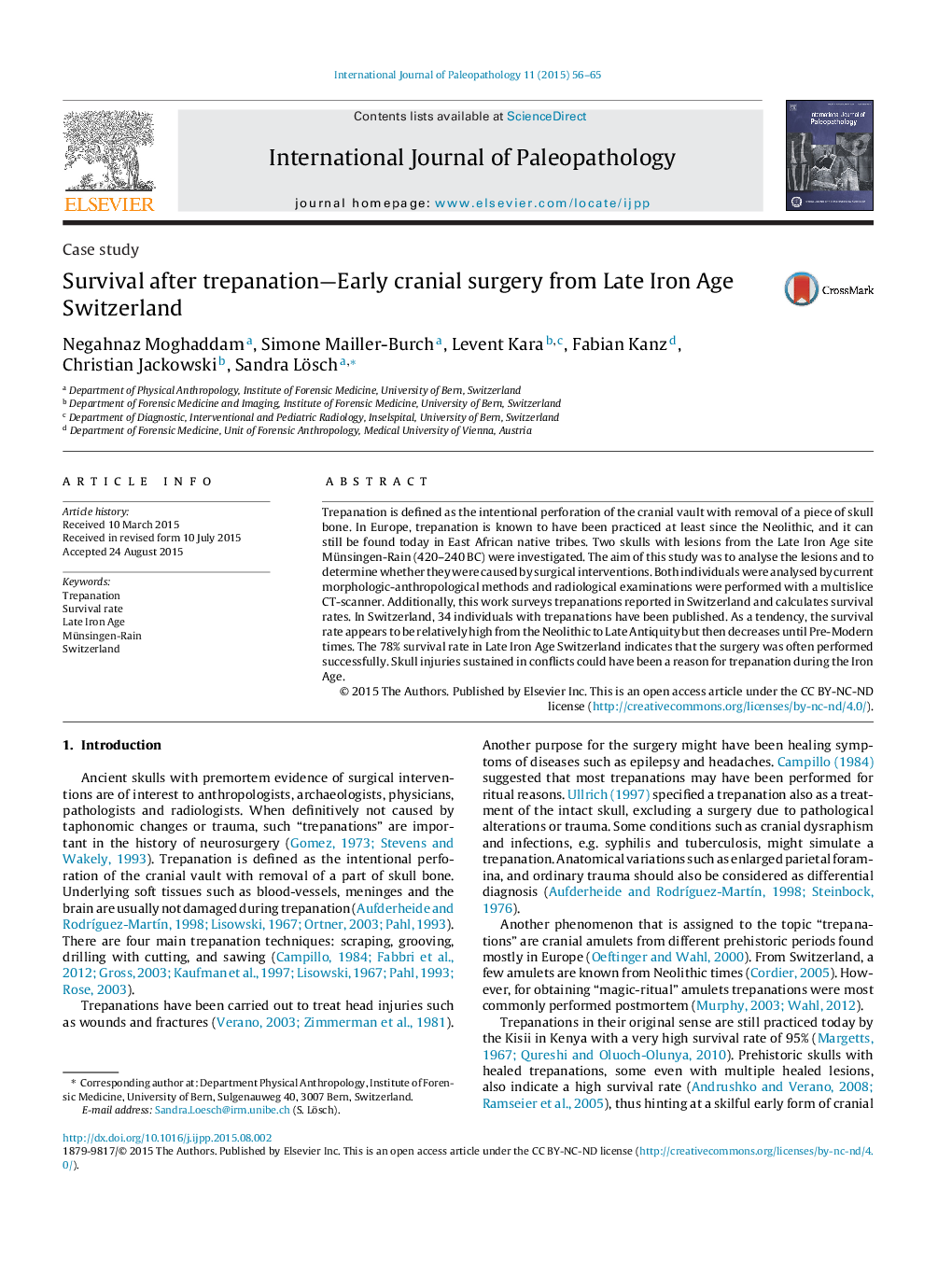| Article ID | Journal | Published Year | Pages | File Type |
|---|---|---|---|---|
| 6554847 | International Journal of Paleopathology | 2015 | 10 Pages |
Abstract
Trepanation is defined as the intentional perforation of the cranial vault with removal of a piece of skull bone. In Europe, trepanation is known to have been practiced at least since the Neolithic, and it can still be found today in East African native tribes. Two skulls with lesions from the Late Iron Age site Münsingen-Rain (420-240 BC) were investigated. The aim of this study was to analyse the lesions and to determine whether they were caused by surgical interventions. Both individuals were analysed by current morphologic-anthropological methods and radiological examinations were performed with a multislice CT-scanner. Additionally, this work surveys trepanations reported in Switzerland and calculates survival rates. In Switzerland, 34 individuals with trepanations have been published. As a tendency, the survival rate appears to be relatively high from the Neolithic to Late Antiquity but then decreases until Pre-Modern times. The 78% survival rate in Late Iron Age Switzerland indicates that the surgery was often performed successfully. Skull injuries sustained in conflicts could have been a reason for trepanation during the Iron Age.
Related Topics
Life Sciences
Biochemistry, Genetics and Molecular Biology
Physiology
Authors
Negahnaz Moghaddam, Simone Mailler-Burch, Levent Kara, Fabian Kanz, Christian Jackowski, Sandra Lösch,
